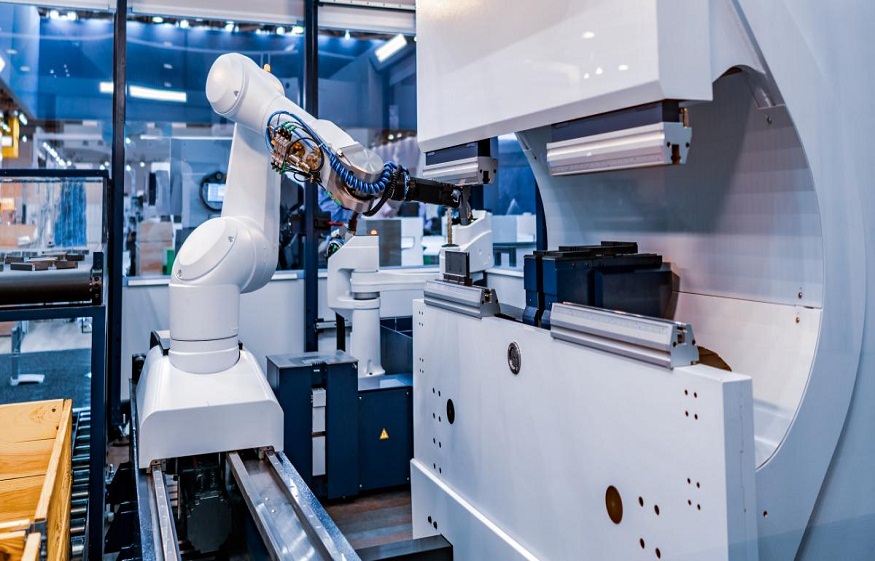In the complex ritual of the modern industry where precession, efficiency and flexibility are the key factors there are heroes who work tirelessly behind the scene. Among them, among them, the frequency converter is a power manager that is silent but essential. Although these high-tech equipment are more times than not invisible to daily life, they form the foundations of most industrial processes, making sure that all the machinery is functioning perfectly, making sure that all energy is consumed, and that all production standards are followed by the industrial world. They are much more than components because their fundamental contributions to the conversion of electrical energy make them indispensible contributors to modern industrial excellence.
Essentially, a frequency converter is designed to alter the frequency of an alternating current (AC) source of power. This might sound like a technical detail, but its implications for machinery and global compatibility are profound. Different regions of the world operate on different electrical grid frequencies, most commonly 50 Hz or 60 Hz. Beyond this global disparity, many advanced industrial machines and sensitive electronics require very specific or variable frequencies to perform optimally. This is precisely where the frequency converter steps in, acting as a crucial bridge and a powerful optimizer.
Precision and Control: Optimizing Machine Performance
Beyond simple compatibility, frequency converters unlock unparalleled levels of precision and control for industrial machinery. Many modern motors and systems operate most efficiently and reliably when their speed and torque can be precisely controlled. Standard power supplies deliver a fixed frequency, meaning fixed motor speeds, which can be limiting for applications requiring variable output.
This is where the frequency converter truly shines as a variable frequency drive (VFD). By dynamically adjusting the output frequency, a VFD can precisely control the speed of AC motors. This capability is critical in a vast array of applications:
- Pumps and Fans: Instead of running at full speed constantly, VFDs allow pumps and fans to operate only as fast as needed, matching their output to demand.
- Conveyor Belts: Precise speed control ensures smooth material flow, preventing bottlenecks or damage to delicate items.
- Robotics and Automation: Accurate speed and position control are paramount for complex robotic movements, enabling intricate manufacturing processes.
The precision that this type of control enables will not only yield a higher quality of the manufactured product, but it also extends the life of the machinery due to a smaller amount of mechanical stress. It allows industries to fine-tune their operations, achieving levels of efficiency and precision that were once unattainable.
The Energy Efficiency Imperative: Saving Resources and Costs
In an era defined by rising energy costs and growing environmental consciousness, energy efficiency is no longer a luxury but a fundamental necessity for modern industry. Frequency converters are powerful tools in this regard, offering significant energy savings, particularly in applications involving motors.
Traditional methods of controlling motor speed, such as throttling valves on pumps or dampers on fans, waste a tremendous amount of energy. A motor running at full speed but with its output restricted still consumes nearly as much power as if it were running unrestricted. Frequency converters, by contrast, directly control the motor’s speed, allowing it to draw only the power it needs for the task at hand. This direct relationship between power consumption and actual demand can lead to energy savings of 20% to 50% or even more in certain applications.
For large-scale industrial operations with numerous motors, these savings accumulate rapidly, translating into substantial reductions in operational costs and a smaller carbon footprint. Beyond direct cost savings, enhanced energy efficiency contributes to a company’s sustainability goals and corporate social responsibility efforts, aligning with global environmental imperatives.
Conclusion: The Unseen Architect of Industrial Progress
The frequency converter, often working silently in the background, is far more than just an electrical component. It is a critical enabler of modern industrial efficiency, precision, and global connectivity. From bridging the gap between international power standards and precisely controlling machinery to delivering substantial energy savings and enhancing system longevity, its contributions are foundational. As industries continue to strive for higher levels of automation, sustainability, and productivity, the silent power manager that is the frequency converter will remain an indispensable, essential tool, driving progress and protecting the vital assets that power our world.

